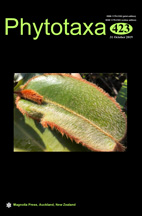Abstract
The genus Linaria Miller (1754: 272) (Plantaginaceae) is the largest of tribe Antirrhineae, including ca. 150 species native to temperate regions of Europe, northern Africa, and Asia (Sáez et al. 2004, Mabberley 2008). The diversity centre of this genus is in the Mediterranean region (Sutton 1988), where 90 species occur (see e.g., Marhold 2011+). The flora of Tunisia includes 21 Linaria species and 10 subspecies, among which 6 taxa are endemic to the country (Pottier-Alapetite 1981, Le Floc’h et al. 2010, Marhold 2011+, Dobignard & Chatelain 2013, APD 2019). Tunisian endemics are still poorly known in terms of frequency, ecology and population dynamics, making difficult to assess their conservation status. Recently, the IUCN Global Red List 2018 (Valderrábano et al. 2018) assessed about 30 Tunisian taxa as Threatened (CR, EN, VU), Near Threatened (NT), and Data Deficient (DD). Among those listed in the latter category, there is Linaria cossonii Bonnet & Barratte (1896: 317), a usually annual herb up to 150 cm tall, growing within coastal sandy pine forests in the NE of Tunisia (CB & NE sensu Pottier Alapetite 1981). This species is rare and was scarcely seen after 1883, i.e. its date of first collection as derived from the protologue.

